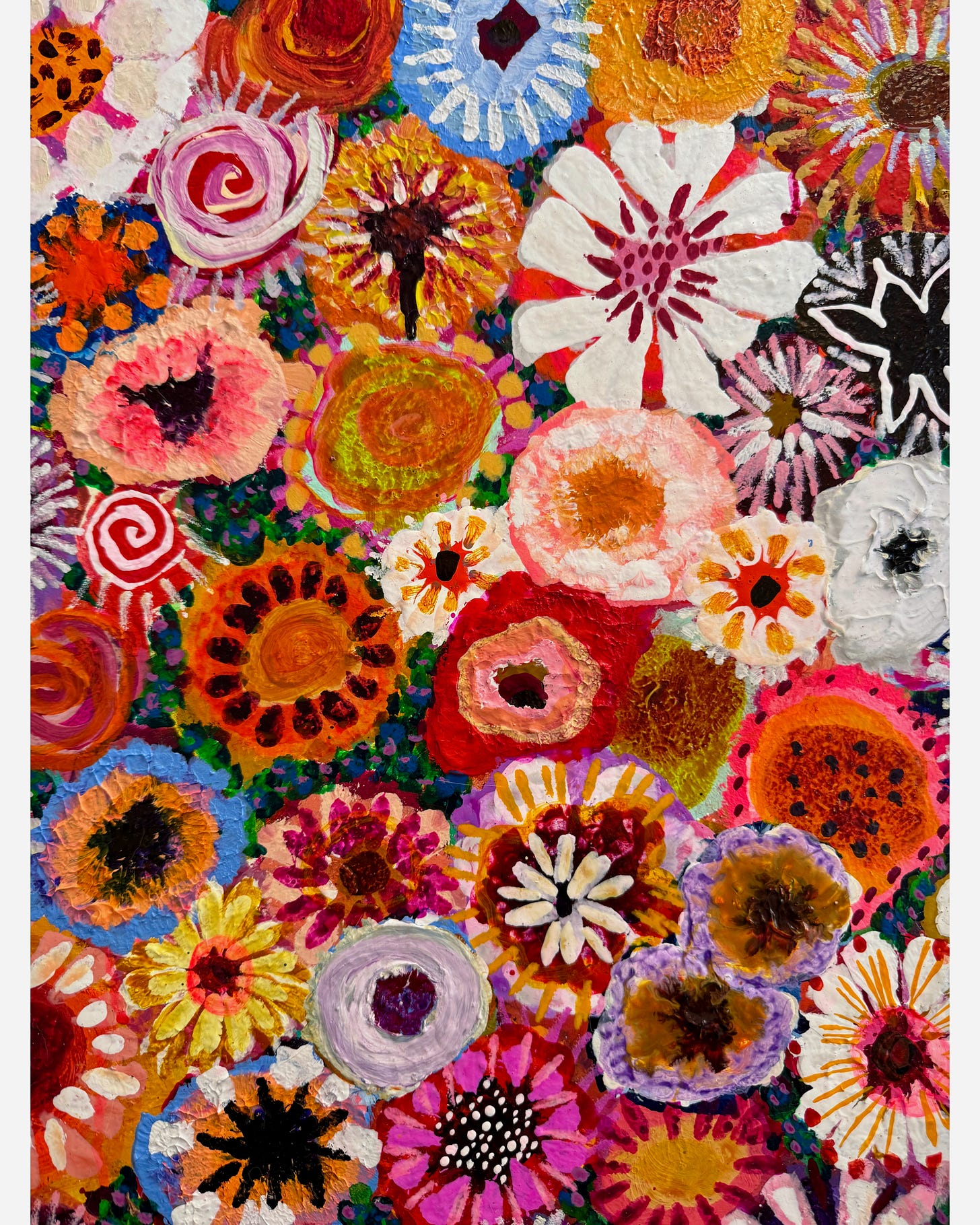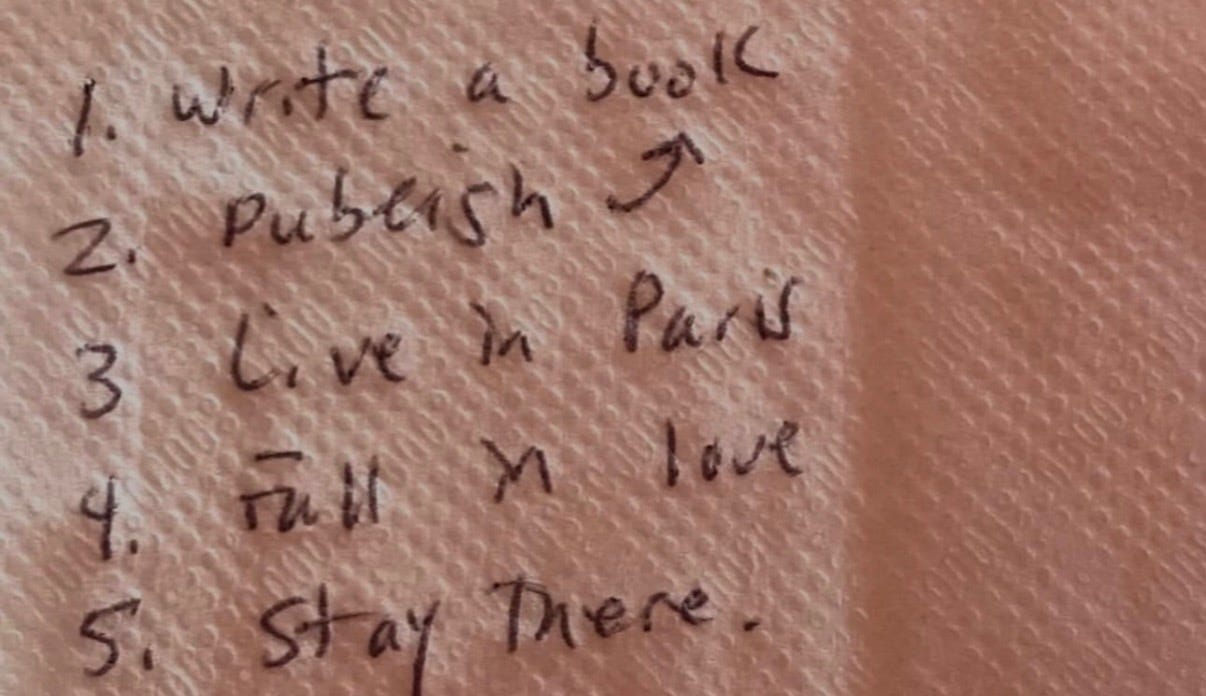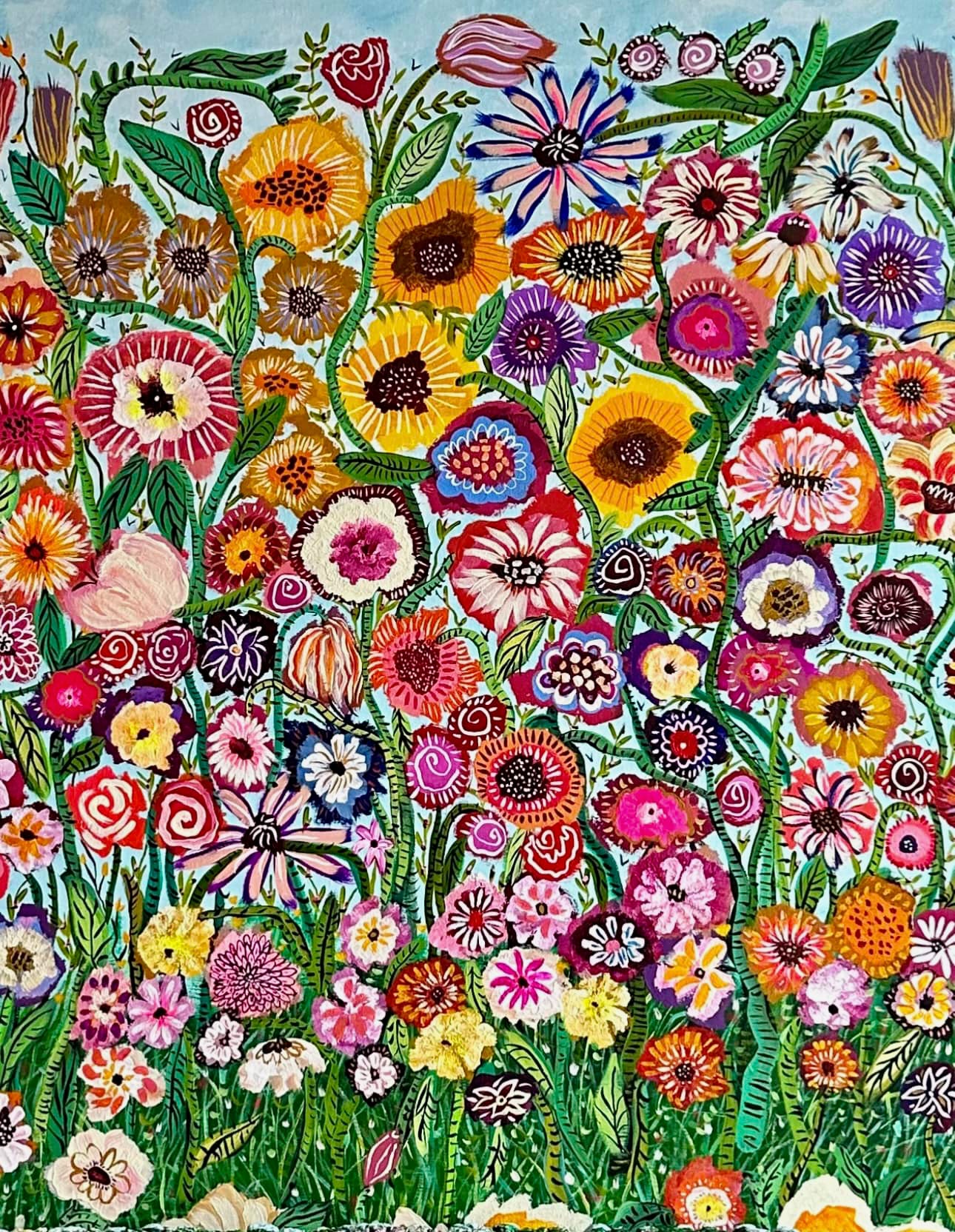I Thought Something Was Wrong With Me
Turns out, it was the script all along: Paris, womanhood, and the courage to write a life of my own.
I used to believe something was wrong with me because I didn’t want the life I was supposed to want. Now, at forty-six, I’m learning that there are many ways to be a woman—and each one is worthy. This is my story of leaving the script behind.
No one tells you what it’s like to not choose the life you were supposed to choose. Especially as a woman, when the blueprint is handed over before you’ve even had the chance to ask what you want. Marriage, children, career—boxes waiting to be ticked, each one dangling the promise that life will finally click into place.
This is the story of what happens when you set the script down—and learn, instead, to belong to yourself.
Trying to Be Normal
In my twenties and thirties, I kept trying to be normal — what a word!
I thought that if I could land a relationship, or prove myself through graduate school and later, a career, the sadness and disconnection I’d carried since childhood might finally lift.
Maybe I’d feel whole.
But I never stopped long enough to ask what I truly wanted. I didn’t trust that I could. There were no models of women in my life who had made choices like this — because they desired them. So I looked outward instead—hoping others might tell me who to be. 🌿 And it wasn’t only marriage or career that seemed prescribed. I learned early on that to be a woman was also to be pretty, polished, petite—hair done, face made up, femininity performed like a duty. I absorbed those rules just as I absorbed the others: be chosen, be pleasing, be grateful.
That journey was punctuated by the loss of my parents and other traumas—something I’m learning is, in many ways, part and parcel of a life lived. I am not unique in my pain, but it has shaped me. It reminds me of a line from Steinbeck’s East of Eden: “And now that you don’t have to be perfect, you can be good.”
Discovering My Values
That permission—that goodness might matter more than perfection—was something I hadn’t considered until my mid-thirties. Only then did I grasp the necessity of living by what I believe. Up to that point, I had never paused to ask what truly guided me. And as a result, my life felt untethered as I stumbled around trying to make meaning.
When I finally did pause to reflect on the values driving me, I was startled to discover that family wasn’t in my top three. In fact, it wasn’t on my list at all. That realization carried shame—owning that I didn’t want the “normal” life so many women around me seemed to step into as if by instinct. But when I named them, my values turned out to be simple and unshakable: freedom, creativity, and love—a long morning walk before the city fully wakes; paint under my nails, a canvas that finally breathes in my studio; my sweet cat Pilar’s purr on my chest, or a message to a friend on her hardest day. 🌿 My paintings, too, hold this truth: flowers that bend, blur, and bleed, never flawless, never symmetrical. Their imperfection is their beauty—the same lesson I keep learning in myself.
And here is the truth I claim now, at forty-six: there are many ways to be a woman. For some women, the traditional path—marriage, children, career—offers a framework that feels natural, even grounding. There is a structure to follow, and for many, that structure is right. But for me, it wasn’t. I wanted something else: a great story, an extraordinary life—even if it looked nothing like the script I was given.
Whatever choices we make as women, the choices are ours to live unapologetically. Each choice, each life, is beautiful and worthy. 🌿 Still, I sometimes wonder about my own parents. I suspect my mother—and my father, respectively—did not fully choose for themselves. And I can’t help but imagine what lives they might have lived had they been free to decide, even if that meant I was never born.
Leaving The Expected Path
In my early twenties, I had a serious relationship. We lived together, and our families assumed we’d do the normative thing—marry, have children, settle down. I did not want that life. When I left him, my mother begged me to reconsider. He’ll take care of you, she said.
I didn’t have the language yet to tell her that there was more to life for her, too, and I wanted her to go out and get it. At the time, I thought: why wouldn’t she want more for me? Suppose she just didn’t know more was possible. Now I see it differently. Like in the way that Pilar and my art are my two tiny universes, I was hers. She just wanted the world for me, and in wanting that, tempered her fears through the suggestion that I marry so I could be looked after. I get that now.
And in a way, this set me up for not fully trusting my own path as it unfolded—second-guessing whether the life I wanted could really hold me.
And in the years after, my choices kept circling that same avoidance. I have to own the way I chased unavailable men. Part of that, I know, comes from attachment wounds I carried. But if I’m honest, there was more to it. I suspect I was dating not to make it work, but to prove it couldn’t. Outwardly, I’d hear myself say: yes, I want this, I want a husband, I want to be chosen. But underneath, a truer voice whispered back: sure, but not like this.
Paris as Stage
At the start of 2025, I packed up my comfortable life in Amsterdam and moved to the city of light. I’d been in love with the idea of living here since my first visit in 2010, and I knew that someday I’d make it happen. For a long while, I was content to let that dream hover in the distance—in the proverbial some-day-space—as if one day all the questions of my life might finally click together in harmony.
That is not how life happens. We know this. And yet I can own that, for a time, living that way—with my heart in the clouds—was enough.
Until it wasn’t.
One night in Amsterdam I woke up breathless, struck by the truth that we don’t get to do this life over. There are no second chances, and it was passing me by.
So here I am, forty-six. My life doesn’t entirely look like I thought it would—no children, no partner, no solid career path—only my artwork, my writing, and the fragile yet brazen hope of making something sustainable out of both. Don’t mistake those words for disappointment. Because in truth, my life looks exactly like I want. It’s only now, at forty-six, that I’m taking ownership of that.
At first, Paris swept me into its current—nights out, new friends, the rush of kissing on the metro and holding hands in the park. For a moment, it felt like the story I was meant to be living. 🌿 But underneath, I recognized the old echo: chasing connection outside myself, hoping it might soothe the sadness that had shadowed me since childhood. Once again, I was letting the external define me, letting the momentum of other people’s lives pull me forward without stopping to ask what I really wanted. I had left Amsterdam to live a life of my own design. I wasn’t about to hand the pen back now.
🌿 Around this time, I had been texting with a woman who had moved to Paris a year before me. She’s a photographer, and wanted to make some photos of me. But everything in my life was coming to a head, and I couldn’t see myself sitting in front of her camera. I told her honestly where I was at, and she responded with such generosity. She said she understood completely—that in her first year, she had retreated, too, giving herself time alone. I appreciated the mirroring and the permission this exchange offered me.
Her words gave me space to trust my own retreat, to notice how even the smallest parts of my life were shifting in this new rhythm. And the unfolding touched even the smallest things. I assumed the city would transform me into a paragon of elegance—face made up, dressed to the nines—only to find myself in more of a Petit Bateau ease—barefaced, casual, unadorned, and somehow more myself than ever. I’ve worn mascara since fourteen, hiding behind my lashes; lately, I often don’t. Now, when I do wear makeup, it’s by choice—on my own terms, playful or expressive rather than obligatory. That shift has been liberating, and a surprising source of confidence. In this story, I replace the inherited version of femininity with my own story of womanhood—self-defined, unapologetic. Hello, forty-six. You brazen animal—I love you.
🌿 It reminded me of another list I once made, scribbled on a bar napkin years ago in Brooklyn:
Write a book
Publish
Move to Paris
Fall in love
Stay there
At the time, I thought “fall in love” meant romance. But it turns out the love was me—falling in love with myself, with my work, with the life I am making here.
This, too, is womanhood.
Claiming Courage
For so long I believed something was wrong with me because I didn’t want the life I was supposed to want. And then, when I didn’t have those things—marriage, children, the tidy version of success—I doubled down on the belief that something must really be wrong with me. While I still hope for a partner, I no longer see it as what defines me, or as the measure of whether my life holds value.
And yet, if I’m honest, I am still longing for a real love story. I look forward to the day that whoever this future person is crosses my path. But part of maturing into my femininity and power has been taking ownership of my independence, and making sure I can sustain myself and live a full, robust life even if I remain single. The truth is, I’m still building. In many ways, I am at once exactly where I want to be and nowhere near it yet. But every day I get to write another page of my story. And in that sense, all of life feels like one giant love story—one I am already living.
🌿 What I understand now is that desire itself is a creative force. It shapes me, stirs me, pushes me to risk, to reach, to make. Desire keeps me alive to possibility, and in that sense, it belongs at the heart of my womanhood.
Maybe that’s what my mother saw in me, even if she was afraid of it: the courage to live by my own values—freedom, creativity, and love—even when it looked nothing like the script I was given.
I think back to one of the last conversations I had with her, years ago, when I drove alone across the country from Connecticut to Colorado. I remember pulling off at Rabbit Ears Pass before descending into Steamboat Springs: the bright white of the snow, the mackerel-colored sky, clouds bruised plum and grey, fresh evergreens rising all around me. I called her from that place of beauty, and she said simply: you have guts.
And I suppose I do. Perhaps she recognized in me the freedom she never claimed for herself.
Maybe that’s the extraordinary life I was after all along—not tidy, not perfect, but wholly mine. It’s the same in my paintings: the flowers I create are never flawless, never rigid. They are unruly, fragile, alive with their own kind of grace. To me, they are reminders that imperfection can be luminous, and that beauty is often born in what refuses to fit the mold.
And maybe that is the point: whatever shape our lives take as women—rooted in family, in art, in work, in love, or in solitude—each is extraordinary in its own right. Each deserves to be lived fully, and unapologetically, as ours.
If this piece resonated, and you’d like to support in some small way, you can buy me a coffee—or even collect one of my digital downloads. Every bit of support helps me keep creating.







Jocelyn,
Right on. Thank you for sharing this inspiring essay, which reminded me of how learning never stops. Would you, Tom Hussey, Melissa, Jer Greene, Jason, and all please see/share our research from Captain Rob Balsamo, Captain Dan Hanley, Amber Quitno, Professor Graeme MacQueen, Scott Hagen, Professor Tony Martin, Dr. Paul Craig Roberts, and others and help us improve it if you can. Thank you!
https://michaelatkinson.substack.com/
Sincerely,
Michael
🦖
Very inspiring Jocelyn. 👏
There are more women here who decided to leave the script behind, if you wish to connect.